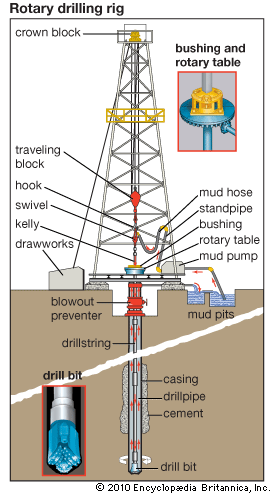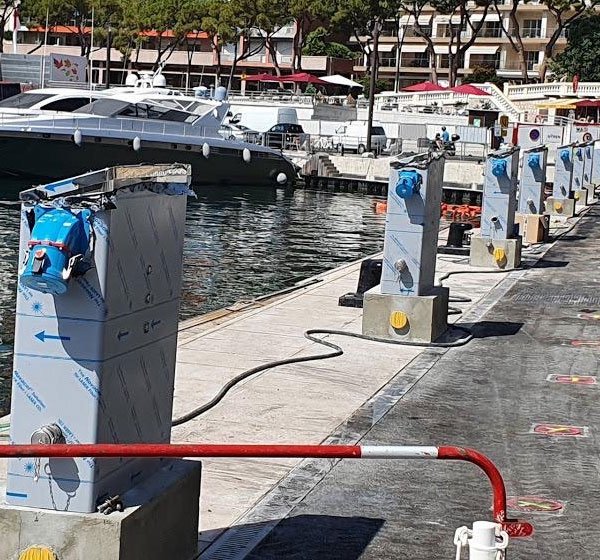
An offshore mud pump, also known as a drilling mud pump, is a specialized piece of equipment used in offshore drilling operations. It is a crucial component of the drilling rig and plays a vital role in the drilling process.
The primary function of an offshore mud pump is to circulate drilling mud (also known as drilling fluid) into the wellbore during the drilling operation. Drilling mud serves several important purposes:
- Cooling the Drill Bit: As the drill bit rotates and cuts through rock formations, it generates heat. Drilling mud is pumped down the drill string to cool and lubricate the bit, preventing it from overheating and getting damaged.
- Removing Cuttings: The drilling mud carries the rock cuttings back up to the surface as it returns through the wellbore. Efficient removal of cuttings is crucial for maintaining a clear wellbore and ensuring smooth drilling operations.
- Maintaining Wellbore Stability: The drilling mud creates hydrostatic pressure to prevent formation fluids (such as oil, gas, or water) from flowing into the wellbore. This pressure helps to stabilize the wellbore walls and prevent wellbore collapse.
- Transporting Additives: Drilling mud can be customized by adding various additives to improve its properties, such as increasing viscosity or inhibiting clay swelling. The mud pump helps circulate these additives effectively.

The offshore mud pump is usually located on the drilling rig and is powered by powerful engines. It operates by using pistons or plungers to create reciprocating motion, which generates the necessary pressure to pump the drilling mud down the drill string and back up through the wellbore.
Offshore drilling environments present unique challenges, such as harsh weather conditions and complex logistical considerations. Therefore, offshore mud pumps are designed to be robust, reliable, and capable of withstanding the demanding conditions encountered at sea.
Overall, the offshore mud pump is a critical piece of equipment that enables safe and efficient drilling operations in offshore oil and gas exploration and production.
Drilling fluid Additives
Water-based drilling fluids consist of a mixture of solids, liquids, and chemicals, with water being the continuous phase. Solids may be active or inactive. The active (hydrophilic) solids such as hydratable clays react with the water phase, dissolving chemicals and making the mud viscous. The inert (hydrophobic) solids such as sand and shale do not react with the water and chemicals to any significant degree. Basically, the inert solids, which vary in specific gravity, make it difficult to analyze and control the solids in the drilling fluid (i.e., inert solids produce undesirable effects).
Broad classes of water-based drilling-fluid additives are in use today. Clays, polymers, weighting agents, fluidloss-control additives, dispersants or thinners, inorganic chemicals, lost-circulation materials, and surfactants are the most common types of additives used in water-based muds.
Weighting Agents. The most important weighting additive in drilling fluids is barium sulphate (BaSO4). Barite is a dense mineral comprising barium sulphate. The specific gravity of barite is at least 4.20 g/cm3 to meet API specifications for producing mud densities from 9 to 19 lbm/gal. However, a variety of materials have been used as weighting agents for drilling fluids including siderite (3.08 g/cm3), calcium carbonate (2.7–2.8 g/cm3), hematite (5.05 g/cm3), ilmetite (4.6 g/cm3), and galena (7.5 g/cm3).
Fluid-Loss-Control Additives. Clays, dispersants, and polymers such as starch are widely used as fluid-losscontrol additives. Sodium montmorillonite (bentonite) is the primary fluid-loss-control additive in most waterbased drilling fluids. The colloidal-sized sodium-bentonite particles are very thin and sheetlike or platelike with a large surface area, and they form a compressible filter cake. Inhibitive mud systems inhibit the hydration of bentonite and greatly diminish its effectiveness. Therefore, bentonite should be prehydrated in fresh water before being added to these systems. The larger and thicker particles of sodium montmorillonite do not exhibit the same fluid-loss-control characteristics.
Thinners or Dispersants. Although the original purpose in applying certain substances called thinners was to reduce flow resistance and gel development (related to viscosity reduction), the modern use of dispersants or thinners is to improve fluid-loss control and reduce filter cake thickness. The term dispersant is frequently used incorrectly to refer to deflocculants. Dispersants are chemical materials that reduce the tendency of the mud to coagulate into a mass of particles or “floc cells” (i.e., the thickening of the drilling mud resulting from edge-to-edge and edge-to-face association of clay platelets). In addition, some dispersants contribute to fluid-loss control by plugging or bridging tiny openings in the filter cake. For this reason, some dispersants such as lignosulfonate (a highly anionic polymer) are more effective than others as fluid-loss reducers (IMCO 1981).
Quebracho is a type of tannin that is extracted from certain hardwood trees and used as a mud thinner. It also can be added to mud to counteract cement contamination. High pH is required for quebracho to dissolve readily in cold water. Therefore, quebracho should be added with caustic soda in equal proportions by weight of 1 part of caustic soda to 5 parts quebracho. Concentration of quebracho varies between 0.5 and 2 lbm/bbl. Safety considerations for mixing these fluids (or any fluid and solid) must be observed.
Lost-Circulation Materials. In mud parlance, losses of whole drilling fluid to subsurface formation are called lost circulation. Circulation in a drilling well can be lost into highly permeable sandstones, natural or induced formation fractures, and cavernous zones; such a loss is generally induced by excessive drilling-fluid pressures. Drilling mud flowing into the formation implies a lack of mud returning to the surface after being pumped down a well.
An immense diversity of lost-circulation materials have been used. Commonly used materials include:
- Fibrous materials such as wood fiber, cotton fiber, mineral fi ber, shredded automobile tires, ground-up currency, and paper pulp
- Granular material such as nutshell (fi ne, medium, and coarse), calcium carbonate (fi ne, medium, and coarse), expanded perlite, marble, formica, and cottonseed hulls
- Flakelike materials such as mica fl akes, shredded cellophane, and pieces of plastic laminate
Darley and Gray (1988) include an additional group of lost-circulation materials—slurries. Hydraulic cement, diesel oil-bentonite-mud mixes, and high-filter-loss drilling muds harden (increase strength) with time after placement.
Surfactants or Surface-Active Agents. A surface-active agent is a soluble organic compound that concentrates on the surface boundary between two dissimilar substances and diminishes the surface tension between them. The molecular structure of surfactants is made of dissimilar groups having opposing solubility tendencies such as hydrophobic and hydrophilic. They are commonly used in the oil industry as additives to water-based drilling fluid to change the colloidal state of the clay from that of complete dispersion to one of controlled flocculation. They may be cationic (dissociating into a large organic cation and a simple inorganic anion), anionic (dissociating into a large organic anion and a simple inorganic cation), or non-ionic (long chains of polymer that do not dissociate) (Darley and Gray 1988).
Surfactants are used in drilling fluids as emulsifiers, dispersants, wetting agents, foamers and defoamers, and to decrease the hydration of the clay surface. The type of surfactant behaviour depends on the structural groups of the molecules.
Various Other Additives. There are a plethora of other additives for drilling fluids. Some are used for pH control—that is, for chemical-reaction control (inhibit or enhance) and drill-string-corrosion mitigation. There are bactericides used in starch-laden fluids to kill bacteria. There are various contaminate reducers such as sodium acid polyphosphate (SAPP) used while drilling cement to bind up calcium from the cement cuttings. There are corrosion inhibitors, especially H2S scavengers. There are defoamers to knock out foaming and foaming agents to enhance foaming. There are lubricants for torque-and-drag reduction as well as pipe-freeing agents for when a drill string is stuck.



